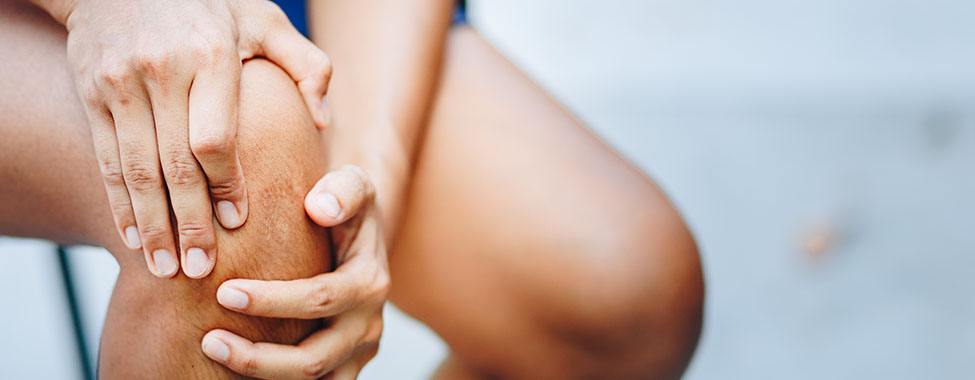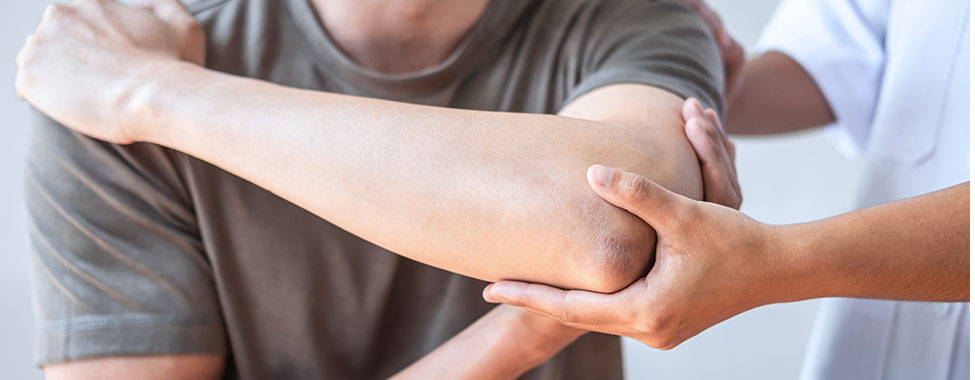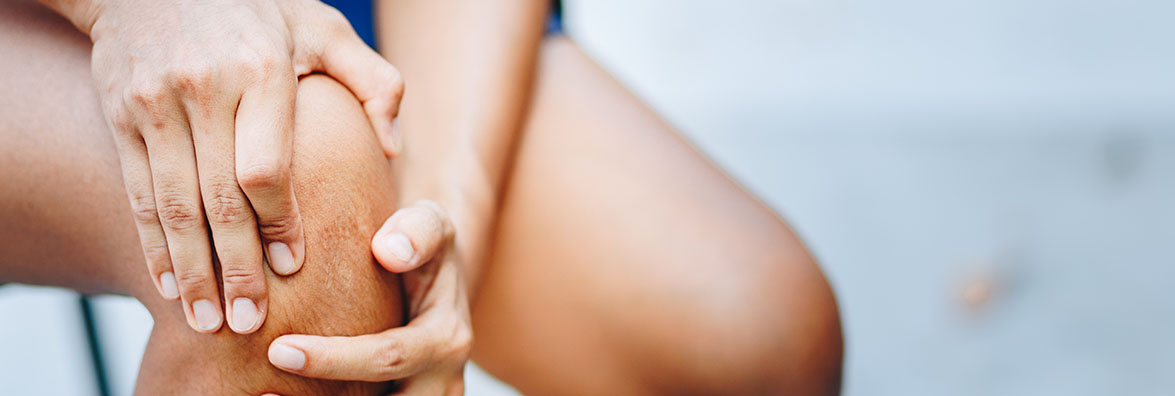- 14 Oct, 2021
- /
- Clearlight Infrared Saunas
- /
- No Comments
Joint Pain Causes & Treatment for Joint Pain Relief
Joints form the connections between bones. They provide support and help you move. Unfortunately, any damage to the joints from disease or injury can interfere with your movement and cause a lot of pain. Joint pain can really put a strain on your everyday life. Luckily, there are a few techniques to help with joint pain relief, whether it’s finding relief in an infrared sauna or by getting medical attention from your doctor. Read on to learn more about the causes of joint pain, how using an infrared sauna can help, and other joint pain treatments are available.

What Causes Joint Pain?
Many different conditions can lead to painful joints, including osteoarthritis, rheumatoid arthritis, bursitis, gout, strains, sprains, and other injuries. Joint pain is extremely common. In one national survey, about one-third of adults reported having joint pain within the past 30 days. Knee pain was the most common complaint, followed by shoulder and hip pain, but joint pain can affect any part of your body, from your ankles and feet to your shoulders and hands. As you get older, painful joints become increasingly more common.
Joint pain can range from mildly irritating to debilitating. It may go away after a few weeks (acute), or last for several weeks or months (chronic). Even short-term pain and swelling in the joints can affect your quality of life. Whatever the cause of joint pain, you can usually manage it with medication, physical therapy, or alternative treatments.
Your doctor will first try to diagnose and treat the condition that is causing your joint pain. The goal is to reduce pain and inflammation and preserve joint function.

Using an Infrared Sauna for Joint Pain Relief
Infrared heat may temporarily provide joint pain relief and ease stiffness. Increased thermal energy to the joints may promote a temporary increase in blood flow. Increased thermal energy may reduce stiffness and increase range of motion. With infrared therapy, the infrared wave penetrates 1.5” to 2” into the body stimulating a relaxation response allowing the muscles and tendons to unwind and release tension. The penetrating heat also raises the core body temperature which creates a “false fever” in the body forcing the immune system to spring into action and start increasing white blood cell production.
The result is a reduction in swelling and inflammation, two major factors in easing chronic pain. In addition, as the infrared heat elevates your core body temperature, capillaries and arteries dilate to increase blood flow allowing more oxygen-rich blood to travel to areas of tension and joint pain to help provide relief and expedite healing.
A study reported in Clinical Rheumatology showed that infrared saunas gave significant relief for patients with chronic pain (such as rheumatoid arthritis). Four weeks of 30-minute, twice-weekly sessions in an infrared sauna resulted in a 40 percent improvement in pain and stiffness. A study published in Internal Medicine showed that patients with chronic pain saw their pain levels drop by nearly 70% after their first session of infrared sauna therapy. Pain scores remained low throughout the observation period.

Additional Joint Pain Treatment Options
Medications
For moderate-to-severe joint pain with swelling, an over-the-counter or prescription nonsteroidal anti-inflammatory drug (NSAID) such as aspirin, ibuprofen (Advil, Motrin), or naproxen sodium (Aleve), can provide relief. If you have milder pain without any swelling, acetaminophen (Tylenol) can be effective.
If your pain is so severe that NSAIDs and acetaminophen aren’t effective enough, your doctor may prescribe a stronger opioid medication. Other drugs that may help relieve pain include muscle relaxants to treat muscle spasms or some antidepressants and antiepileptic drugs, which both interfere with pain signals.
Topical Agents
Capsaicin, a substance found in chili peppers, may relieve joint pain from arthritis and other conditions. Capsaicin blocks substance P, which helps transmit pain signals, and it triggers the release of chemicals in the body called endorphins, which block pain. Another topical option is an arthritis cream containing the ingredient methyl salicylate, such as Bengay. CBD topicals can also help by providing localized relief when applied to sore or irritated areas via the skin, which contains endocannabinoid receptors.
Injections
For people who don’t find joint pain relief from oral or topical medications, the doctor can inject a steroid medication directly into the joint every three months to four months. Steroid injections are most commonly used in patients with arthritis or tendinitis. The procedure is sometimes done in conjunction with removing fluid from the joint. Alternatively, your doctor might recommend injections of hyaluronan, a synthetic version of the natural joint fluid used to treat osteoarthritis.

Physical Therapy
You can work with a physical therapist to strengthen the muscles around the joint, stabilize the joint, and improve your range of motion. The therapist will use techniques such as ultrasound, heat or cold therapy, electrical nerve stimulation, and manipulation.
If you are overweight, losing weight can relieve some of the pressure on your painful joints. Exercise is one effective way to lose weight (along with diet), but be careful to stick with low-impact exercises that won’t further irritate the joint. Swimming and bicycling are among the best exercises because both allow you to exercise your joints without putting impact on them. Because water is buoyant, swimming also relieves some of the pressure on your joints.
Home Care
You can relieve short-term joint pain with a few simple techniques at home. One method to follow is the PRICE method:
- Protect the joint with a brace or wrap
- Rest the joint, avoiding any activities that cause you pain
- Ice the joint for about 15 minutes, several times each day
- Compress the joint using an elastic wrap
- Elevate the joint above the level of your heart
Applying ice to your painful joints can relieve the pain and inflammation. For muscle spasms around joints, try using a heating pad or wrap several times a day. Your doctor may recommend that you tape or splint the joint to minimize movement or reduce pain, but avoid keeping the joint still for too long because it can eventually become stiff and lose function.
Supplements
Some research has indicated that glucosamine and chondroitin supplements can help with joint pain and improve function. Both of these substances are components of normal cartilage, which helps cushion the bones and protect joints. Glucosamine and chondroitin supplements are available in capsule, tablet, powder, or liquid form. Although these supplements don’t work for everyone, they are generally safe to try because they don’t have any significant side effects, but be sure to check with your doctor to ensure they are safe for you.
You should see your doctor if you have any unexplained joint pain, especially if it doesn’t go away on its own after a few days. No matter what treatment your doctor recommends, get medical help right away if the pain gets intense, your joint suddenly becomes inflamed or deformed, or you can no longer use the joint at all. Early detection and diagnosis can allow for effective treatment of the underlying cause of your discomfort.
 Canada
Canada Australia
Australia New Zealand
New Zealand Germany
Germany UK
UK EU
EU Ireland
Ireland Malaysia
Malaysia China
China



